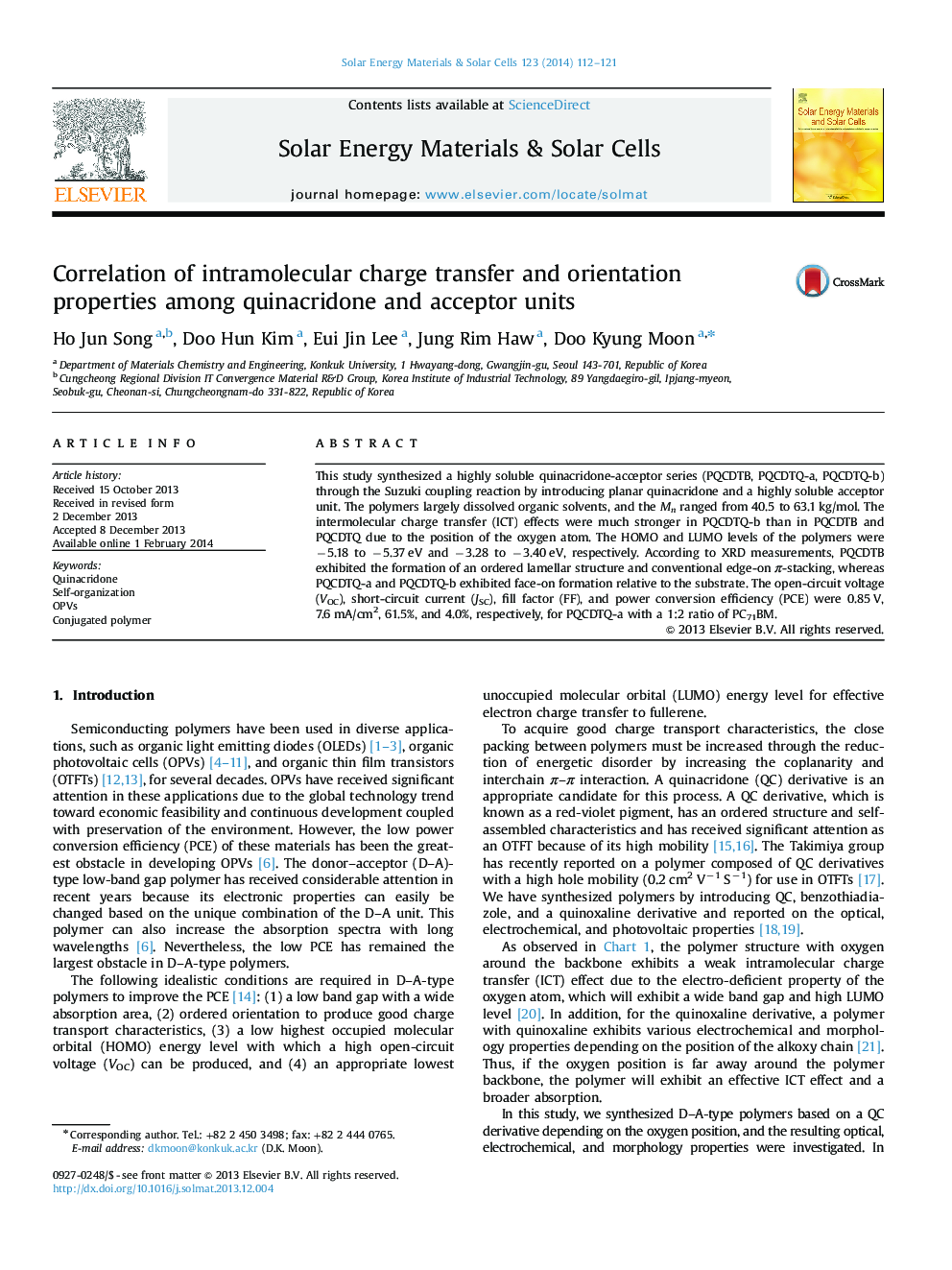| کد مقاله | کد نشریه | سال انتشار | مقاله انگلیسی | نسخه تمام متن |
|---|---|---|---|---|
| 78053 | 49315 | 2014 | 10 صفحه PDF | دانلود رایگان |
• We synthesized various polymers based on quinacridone.
• The synthesized polymers showed good solubility and thermal stability.
• The ICT effect was much stronger in PQCDTQ-b.
• PQCDTQ-a and PQCDTQ-b exhibited face-on formation relative to the substrate.
• PQCDTQ showed PCE of 4.0% with high FF (61.5%).
This study synthesized a highly soluble quinacridone-acceptor series (PQCDTB, PQCDTQ-a, PQCDTQ-b) through the Suzuki coupling reaction by introducing planar quinacridone and a highly soluble acceptor unit. The polymers largely dissolved organic solvents, and the Mn ranged from 40.5 to 63.1 kg/mol. The intermolecular charge transfer (ICT) effects were much stronger in PQCDTQ-b than in PQCDTB and PQCDTQ due to the position of the oxygen atom. The HOMO and LUMO levels of the polymers were −5.18 to −5.37 eV and −3.28 to −3.40 eV, respectively. According to XRD measurements, PQCDTB exhibited the formation of an ordered lamellar structure and conventional edge-on π-stacking, whereas PQCDTQ-a and PQCDTQ-b exhibited face-on formation relative to the substrate. The open-circuit voltage (VOC), short-circuit current (JSC), fill factor (FF), and power conversion efficiency (PCE) were 0.85 V, 7.6 mA/cm2, 61.5%, and 4.0%, respectively, for PQCDTQ-a with a 1:2 ratio of PC71BM.
Figure optionsDownload as PowerPoint slide
Journal: Solar Energy Materials and Solar Cells - Volume 123, April 2014, Pages 112–121
